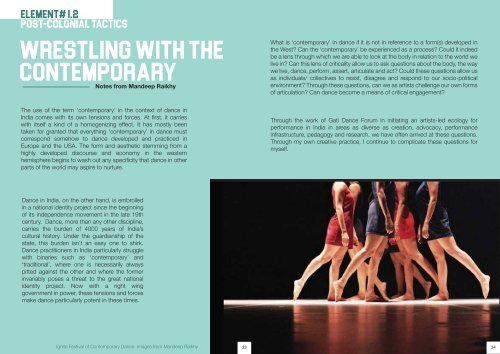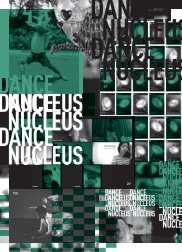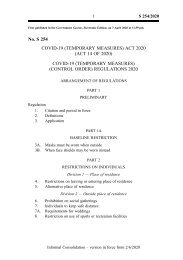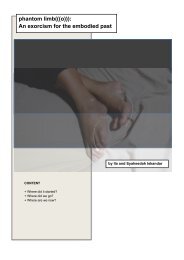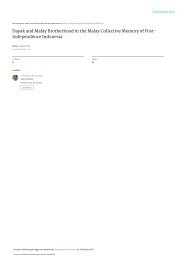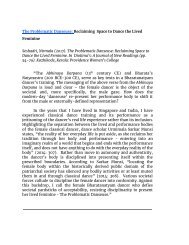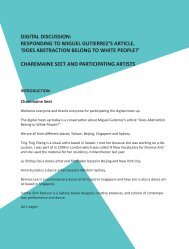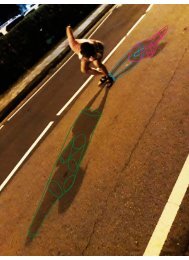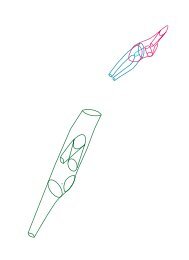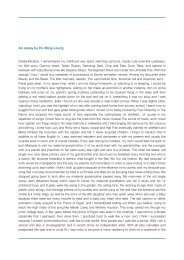FUSE#1
FUSE is a bi-annual publication that documents the projects at Dance Nucleus
FUSE is a bi-annual publication that documents the projects at Dance Nucleus
Create successful ePaper yourself
Turn your PDF publications into a flip-book with our unique Google optimized e-Paper software.
Element# 1.2<br />
Post-Colonial Tactics<br />
Wrestling with the<br />
contemporary<br />
Notes from Mandeep Raikhy<br />
What is ‘contemporary’ in dance if it is not in reference to a form(s) developed in<br />
the West? Can the ‘contemporary’ be experienced as a process? Could it indeed<br />
be a lens through which we are able to look at the body in relation to the world we<br />
live in? Can this lens of criticality allow us to ask questions about the body, the way<br />
we live, dance, perform, assert, articulate and act? Could these questions allow us<br />
as individuals/ collectives to resist, disagree and respond to our socio-political<br />
environment? Through these questions, can we as artists challenge our own forms<br />
of articulation? Can dance become a means of critical engagement?<br />
The use of the term ‘contemporary’ in the context of dance in<br />
India comes with its own tensions and forces. At first, it carries<br />
with itself a kind of a homogenizing effect. It has mostly been<br />
taken for granted that everything ‘contemporary’ in dance must<br />
correspond somehow to dance developed and practiced in<br />
Europe and the USA. The form and aesthetic stemming from a<br />
highly developed discourse and economy in the western<br />
hemisphere begins to wash out any specificity that dance in other<br />
parts of the world may aspire to nurture.<br />
Through the work of Gati Dance Forum in initiating an artists-led ecology for<br />
performance in India in areas as diverse as creation, advocacy, performance<br />
infrastructure, pedagogy and research, we have often arrived at these questions.<br />
Through my own creative practice, I continue to complicate these questions for<br />
myself.<br />
Dance in India, on the other hand, is embroiled<br />
in a national identity project since the beginning<br />
of its independence movement in the late 19th<br />
century. Dance, more than any other discipline,<br />
carries the burden of 4000 years of India’s<br />
cultural history. Under the guardianship of the<br />
state, this burden isn’t an easy one to shirk.<br />
Dance practitioners in India particularly struggle<br />
with binaries such as ‘contemporary’ and<br />
‘traditional’, where one is necessarily always<br />
pitted against the other and where the former<br />
invariably poses a threat to the great national<br />
identity project. Now with a right wing<br />
government in power, these tensions and forces<br />
make dance particularly potent in these times.<br />
Ignite Festival of Contemporary Dance. Images from Mandeep Raikhy<br />
33 34


